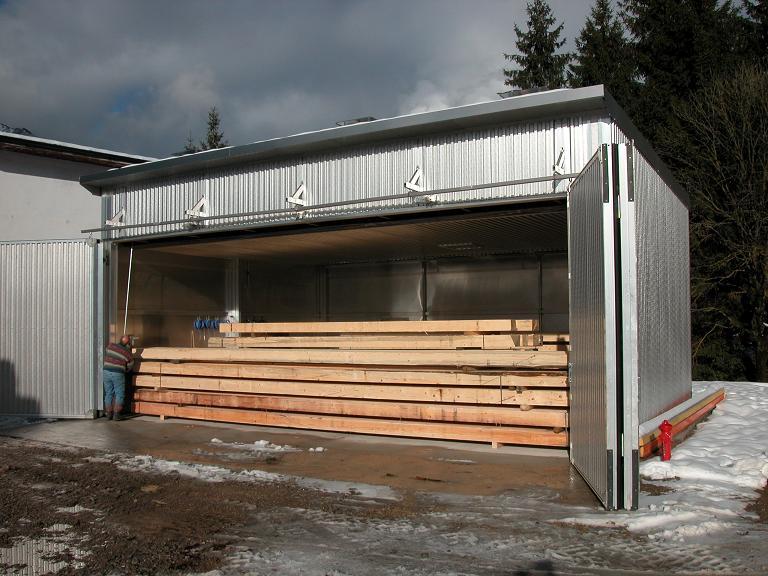- Woodworking: when wood is used as a construction material, whether as a structural support in a building or in woodworking objects, it will absorb or desorb moisture until it is in equilibrium with its surroundings. Equilibration (usually drying) causes unequal shrinkage in the wood, and can cause damage to the wood if equilibration occurs too rapidly. The equilibration must be controlled to prevent damage to the wood.
- Wood burning: when wood is burned, it is usually best to dry it first. Damage from shrinkage is not a problem here, and the drying may proceed more rapidly than in the case of drying for woodworking purposes. Moisture affects the burning process, with unburnt hydrocarbons going up the chimney. If a 50% wet log is burnt at high temperature, with good heat extraction from the exhaust gas leading to a 100 °C exhaust temperature, about 5% of the energy of the log is wasted through evaporating and heating the water vapour. With condensers, the efficiency can be further increased; but, for the normal stove, the key to burning wet wood is to burn it very hot, perhaps starting fire with dry wood. (http://en.wikipedia.org/wiki/Wood_drying)
ALL of the material we buy here at #stairhaus is kiln dried. The removal of moisture is controlled and we end up with a much more stable material. Even our barn board is kiln dried as most of our competitors in that market sell it slightly air dried or green. It is important to understand this process so you can appreciate all the steps it takes to get a beautiful piece of wood.
*click on the pictures below to view a few different styles of wood kilns






